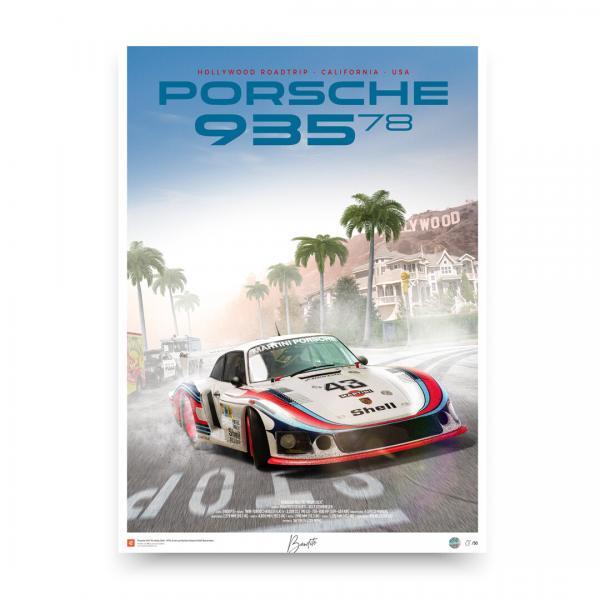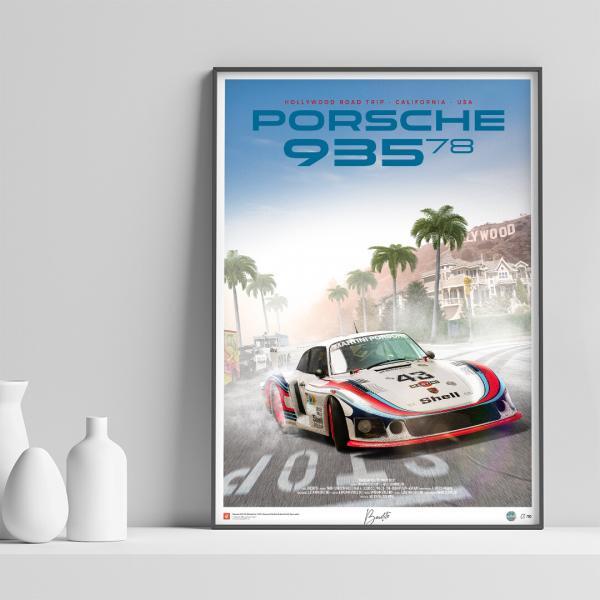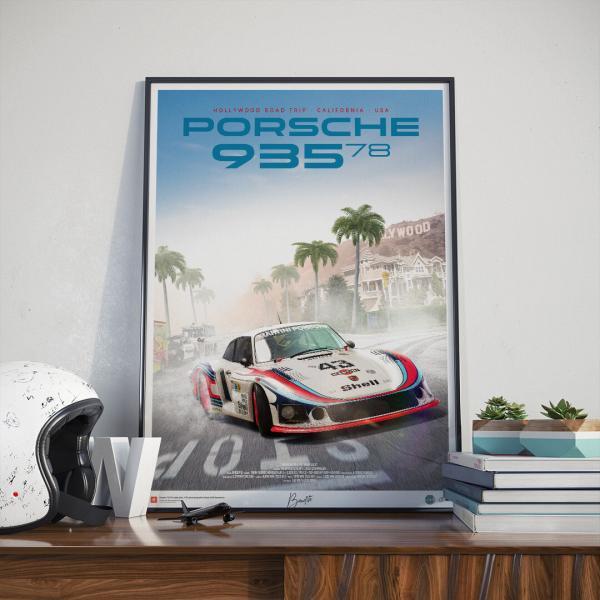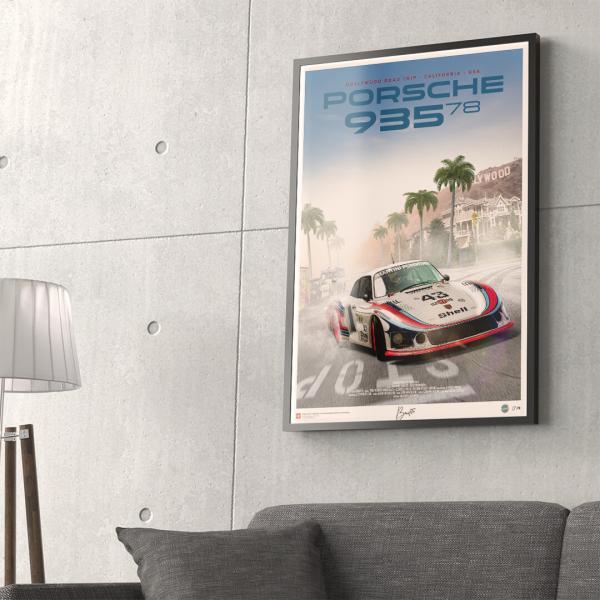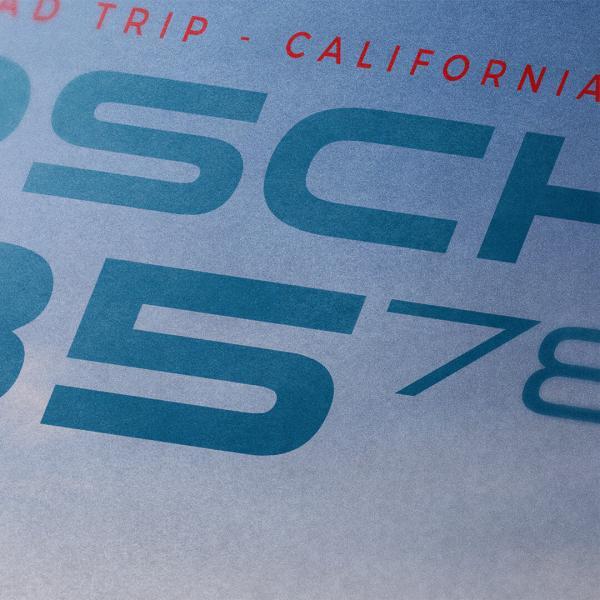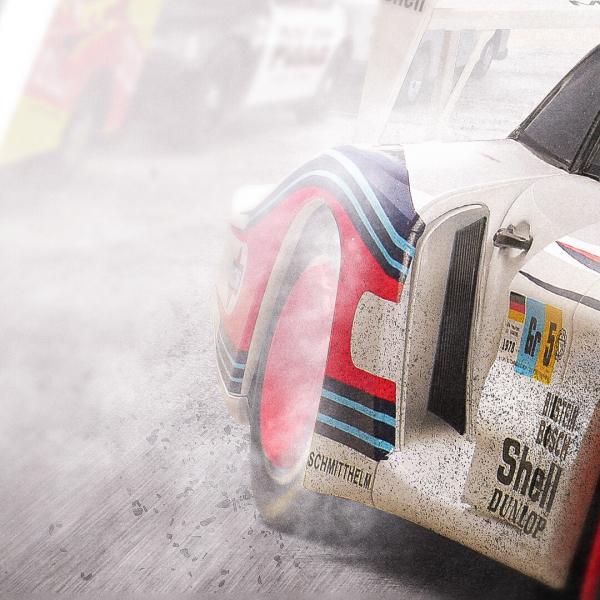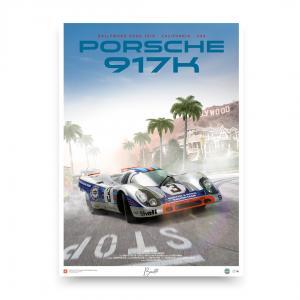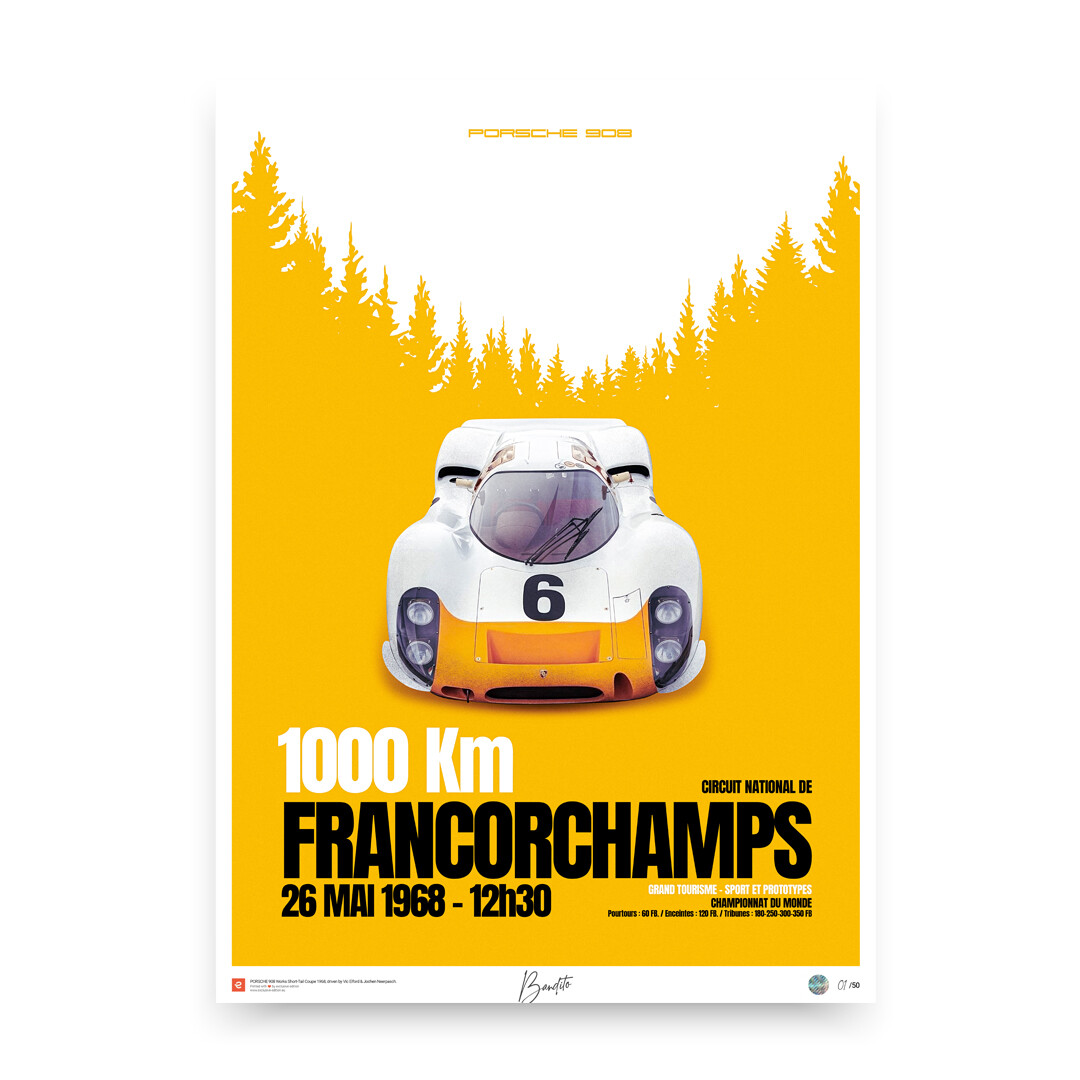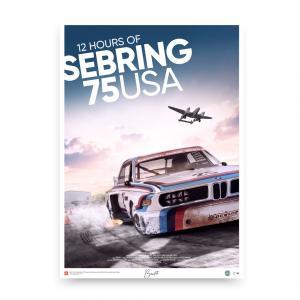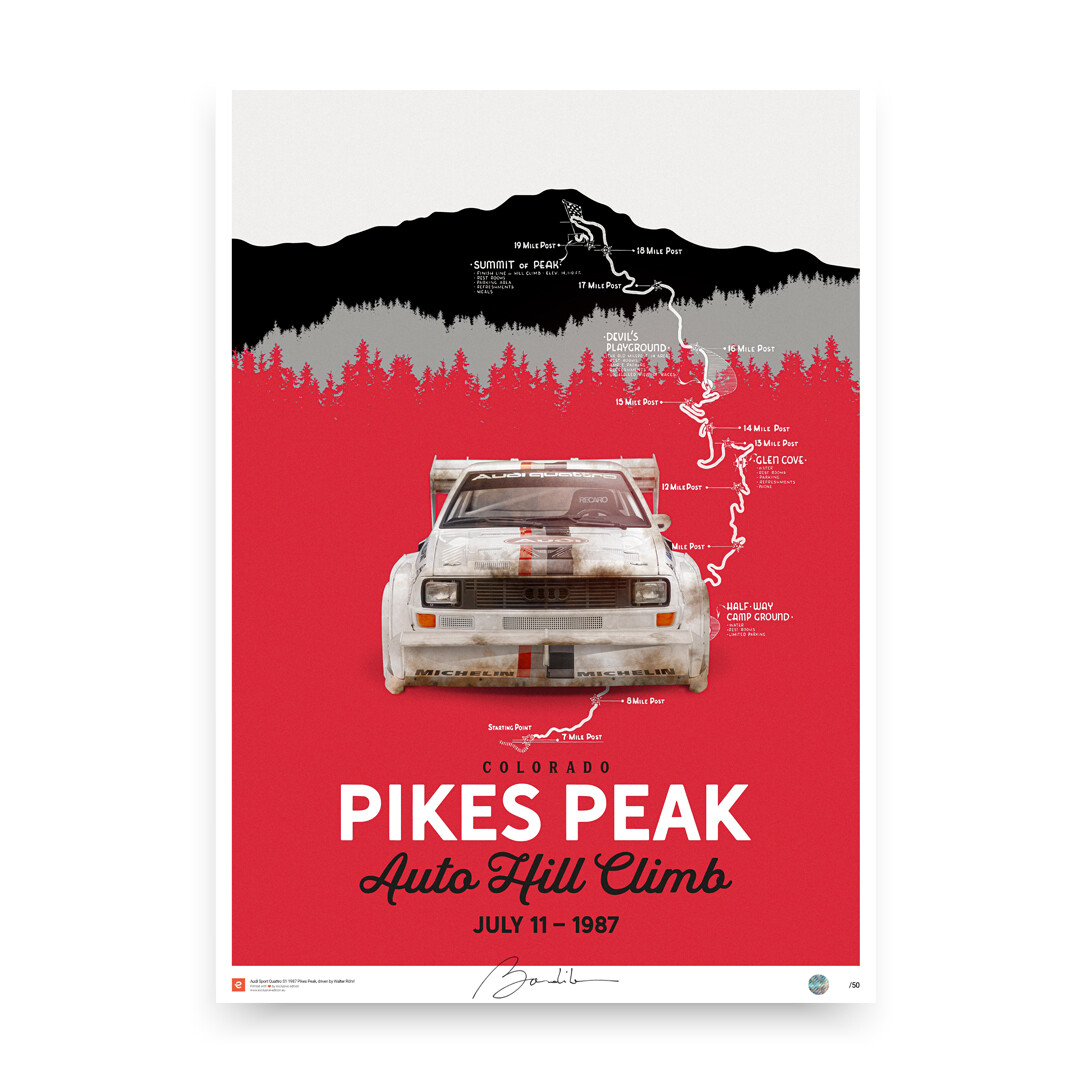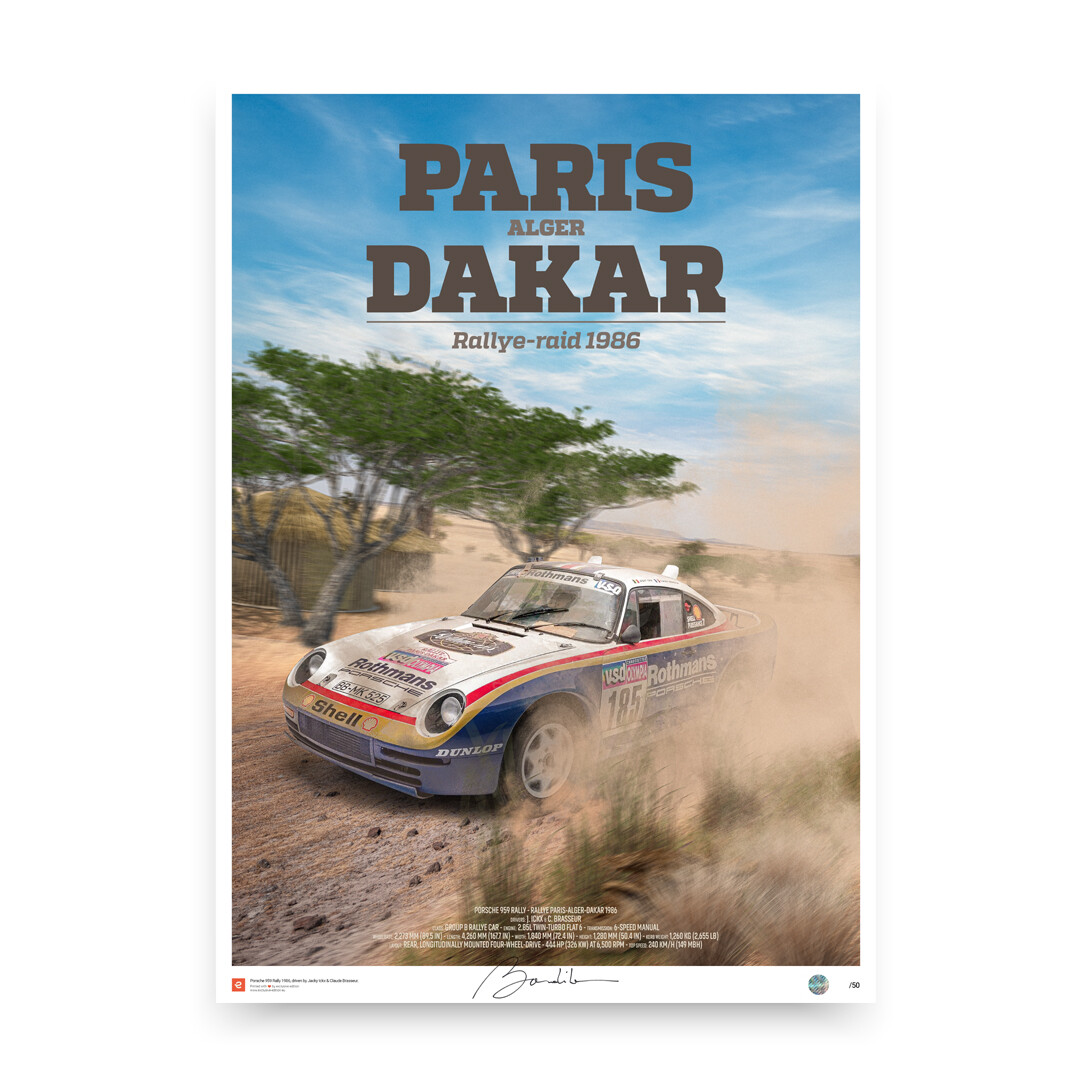Description
A bit of history
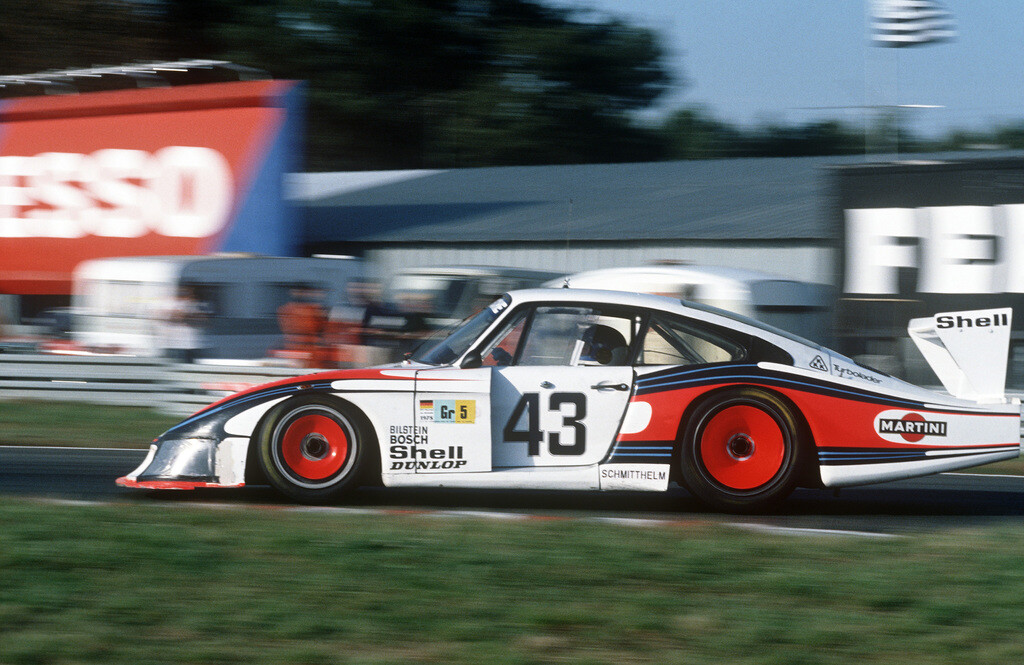
The Porsche 935/76
The Porsche 935/76 was a groundbreaking race car that debuted as Porsche’s first entry into the newly established Group 5 category. At the 24 Hours of Le Mans 1976, this turbocharged beast demonstrated Porsche’s ability to innovate, setting the stage for a legacy of dominance in endurance racing.
Porsche 935/76: The Birth of a Turbocharged Icon
Derived from the Porsche 911 Carrera RSR, the 935/76 was a purpose-built race car designed to maximize performance within the Group 5 regulations, also known as the “Silhouette” class. Porsche engineers heavily modified the bodywork for aerodynamics and added a turbocharged engine that became the hallmark of the 935 series.
Key Technical Features:
- Engine: 2.85L flat-six turbocharged engine, producing over 590 horsepower
- Chassis: Lightweight steel and aluminum structure, optimized for endurance racing
- Aerodynamics: Wide rear fenders, a massive rear wing, and a low nose for enhanced stability and reduced drag
- Transmission: 4-speed manual gearbox, robust enough for the grueling demands of Le Mans
The 24 Hours of Le Mans 1976: A Test of Innovation
Competing in the Group 5 class, the Porsche 935/76 faced stiff competition but showcased its potential as a turbocharged powerhouse. Although victory eluded it in its debut year, the 935/76 left a lasting impression on the endurance racing world.
Race Highlights:
- Reliability Under Pressure: Despite technical challenges, the 935/76 demonstrated resilience, completing the grueling 24-hour race.
- Turbocharged Performance: Its cutting-edge turbo technology delivered exceptional speed on the Mulsanne Straight, cementing Porsche’s reputation for engineering innovation.
- Foundation for Future Success: The lessons learned during the 1976 season laid the groundwork for the dominance of later 935 models.
Legacy of the Porsche 935/76
The 1976 Le Mans marked the beginning of a turbocharged revolution in endurance racing, with the Porsche 935/76 at the forefront. While it didn’t clinch a win in its inaugural year, the car’s design and performance set a benchmark for future iterations.
Enduring Impact:
- Technological Innovation: The 935/76 showcased the potential of turbocharged engines, a technology that would define Porsche’s racing success.
- Racing Heritage: The car’s evolution culminated in iconic versions like the 935/78 “Moby Dick”, which dominated races and captured imaginations.
- Collector’s Icon: The 935/76 is a coveted piece of motorsport history, representing the beginning of a legendary lineage.
A Legacy Turbocharged
The Porsche 935/76 remains a symbol of Porsche’s bold engineering and commitment to excellence in endurance racing. Its debut at the 24 Hours of Le Mans 1976 is remembered as a turning point that solidified turbo technology as a cornerstone of motorsport success.
For Porsche fans and motorsport enthusiasts, the 935/76 is more than a race car; it’s a milestone that paved the way for future triumphs and set the standard for endurance racing machines.
Discover our complete porsche poster collection
Porsche 935/76 on YouTube
Collection
Porsche 935-78 Moby Dick
Details
Size: Multi formats available
Print technology: UltraChrome HD 8-Color pigment ink
Paper: Hahnemühle Photo Rag® 188 gr
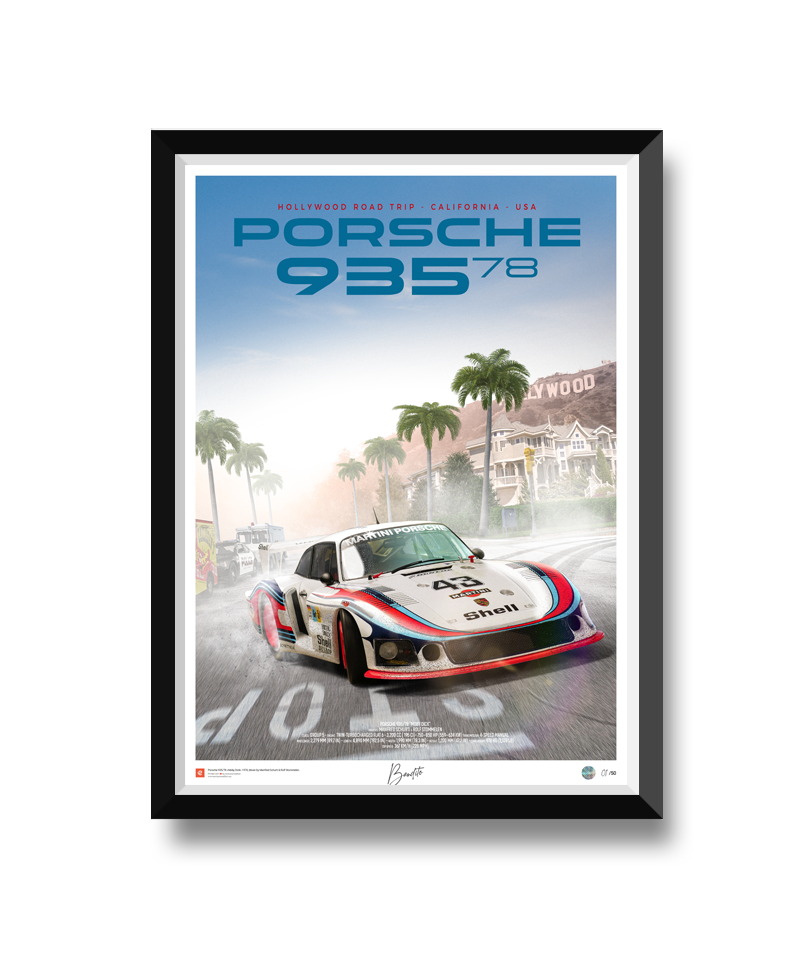
Production
Quantity: Limited edition (50)
Signed by Art Director: Yes
Numbered: Yes
Security hologram sticker: Yes
Framing: Not including
Delivery
Posters are packed and delivered in a protective tube to ensure a safe delivery.
Collection
Porsche 935-78 Moby Dick
Details
Size: Multi formats available
Print technology: UltraChrome HD 8-Color pigment ink
Paper: Hahnemühle Photo Rag® 188 gr
Production
Quantity: Limited edition (50)
Signed by Art Director: Yes
Numbered: Yes
Security hologram sticker: Yes
Framing: Not including
Delivery
Posters are packed and delivered in a protective tube to ensure a safe delivery.

